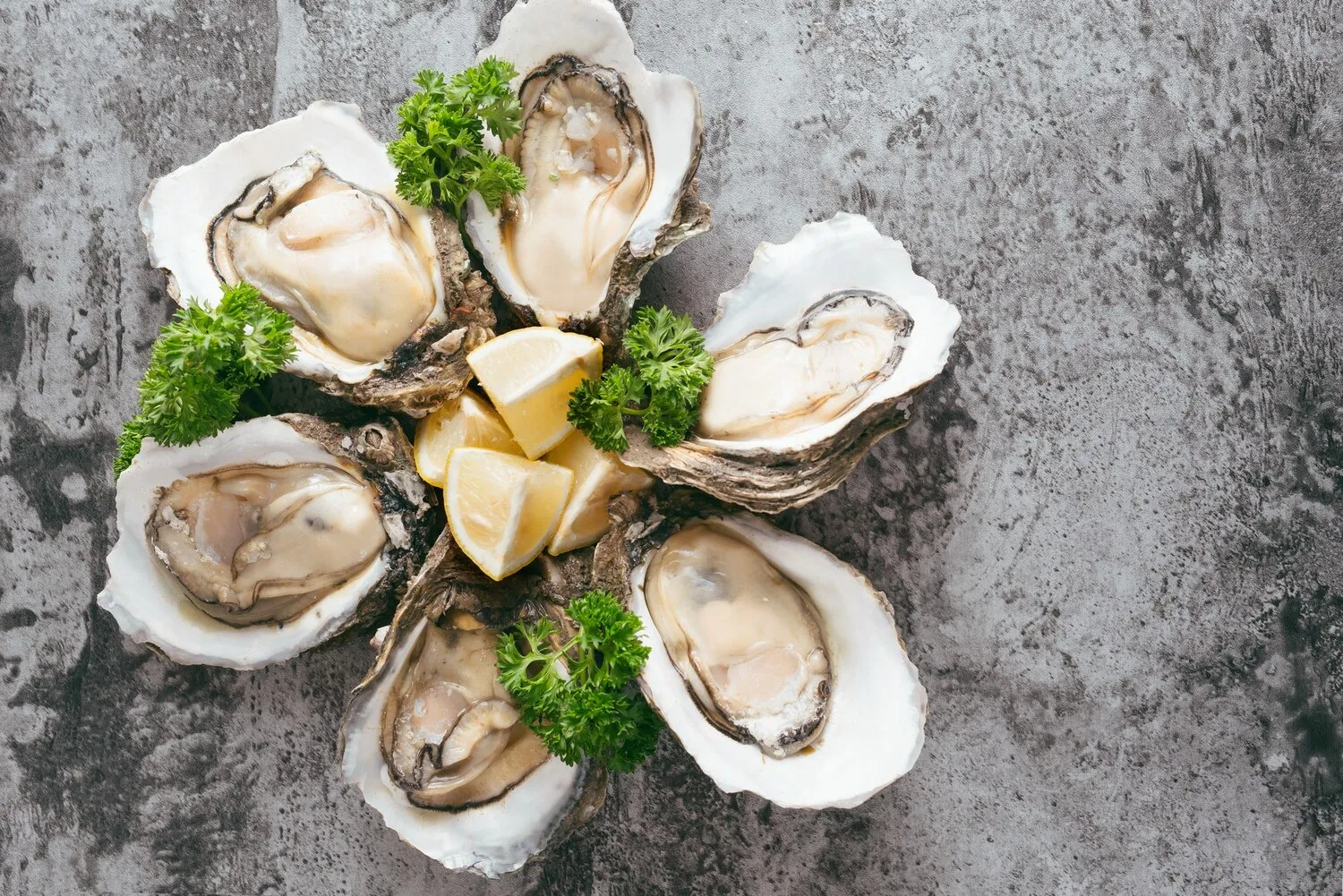
Oysters
A selection of fresh oysters, sourced daily. Options typically include Te Kouma, Clevedon Coast, and others, served natural or with mignonette.
Nutrition Facts
* The % Daily Value (DV) tells you how much a nutrient in a serving of food contributes to a daily diet. 2,000 calories a day is used for general nutrition advice.
Oysters have been a food source for coastal communities for millennia, with evidence of consumption dating back to prehistoric times. Ancient Romans and Greeks cultivated oysters, considering them a delicacy. Their popularity continued through the Middle Ages and Renaissance, evolving from a common food to a luxury item.
Oysters are deeply embedded in the culture of many coastal regions, representing both a culinary tradition and a symbol of luxury and celebration.
Aphrodisiac Beliefs
Oysters have long been associated with aphrodisiac qualities, a belief dating back to ancient times. While scientific evidence is limited, the association persists in popular culture.
Oyster Festivals
Many coastal towns host oyster festivals celebrating the local oyster harvest and culture. These events often feature oyster shucking contests, live music, and various oyster preparations.
Sustainability Concerns
Due to overfishing and habitat degradation, oyster populations have declined in some areas. Sustainable oyster farming and restoration efforts are increasingly important for preserving oyster culture and ecosystems.
Fresh oysters are prized for their briny, oceanic flavor and delicate texture.
The flavor profile of an oyster varies greatly depending on its species, the water in which it was raised (its 'merroir'), and the season. Flavors range from intensely salty and mineral-rich to subtly sweet and creamy. Textures can range from firm and meaty to soft and yielding. Common flavor notes include salt, brine, butter, cucumber, melon, and metallic undertones. The 'liquor' or oyster liquor, the fluid within the shell, contributes significantly to the overall flavor experience.
Freshness is Key
Ensure oysters are alive when purchased. They should be tightly closed, or close quickly when tapped. Discard any that are open and do not close.
Shucking Safely
Use an oyster knife and thick gloves to protect your hands. Insert the knife into the hinge and twist to pop it open, then run the knife along the top shell to detach the oyster.
Serving Suggestions
Serve oysters on a bed of crushed ice to maintain their freshness and temperature. Common accompaniments include lemon wedges, mignonette sauce (vinegar, shallots, and pepper), hot sauce, and horseradish.
Pairing Recommendations
Oysters pair well with crisp, dry white wines such as Sauvignon Blanc, Chablis, and Muscadet. Champagne and other sparkling wines are also excellent choices.
Explore additional Seafood dishes and restaurants
Explore SeafoodDiscover top dining spots and culinary experiences in Auckland.
Explore AucklandLearn more about the food culture, restaurant scene, and culinary heritage of New Zealand.
Explore New Zealand